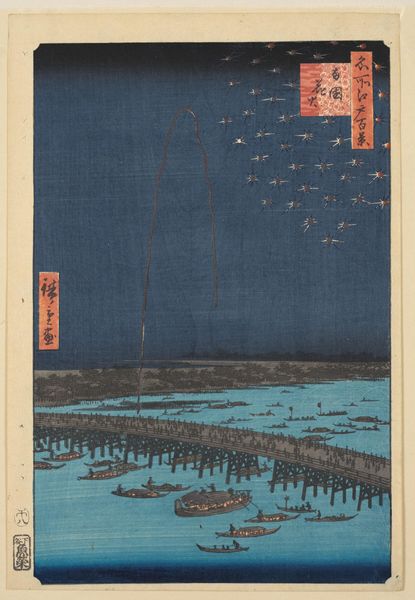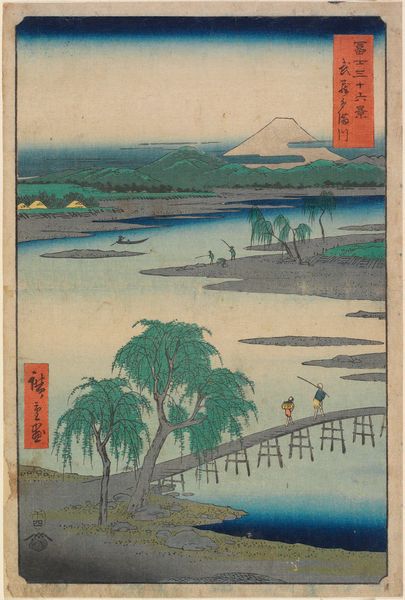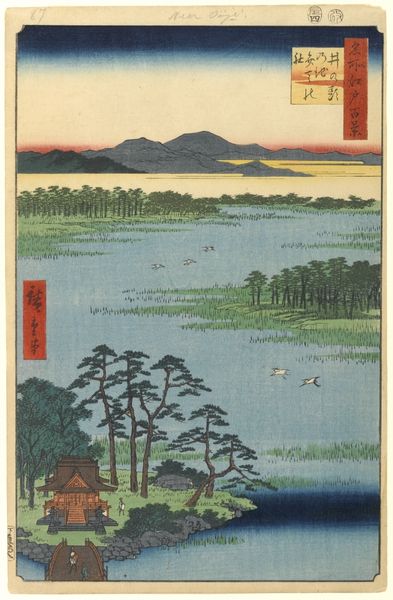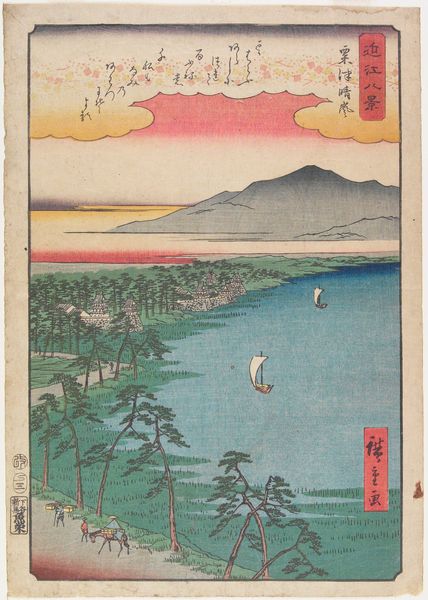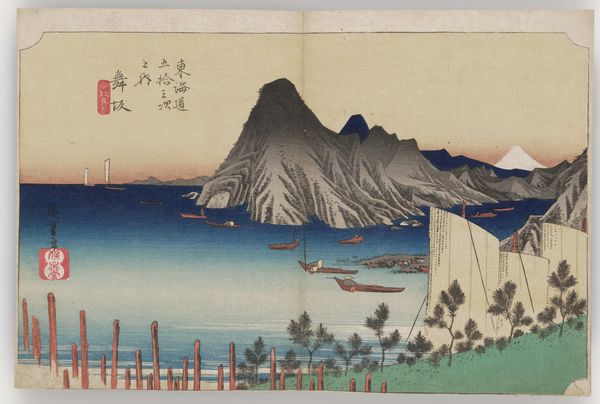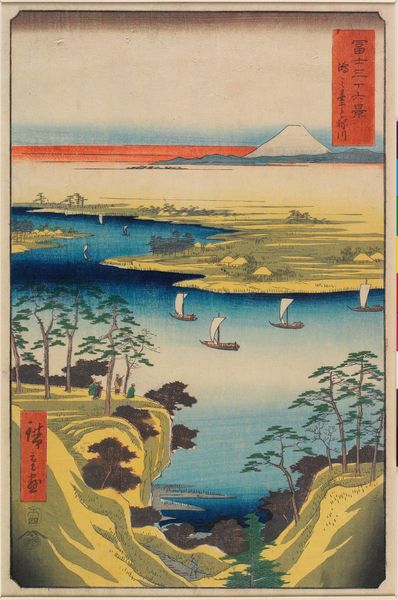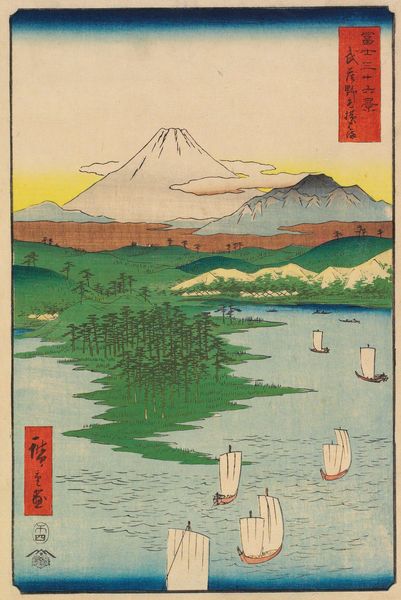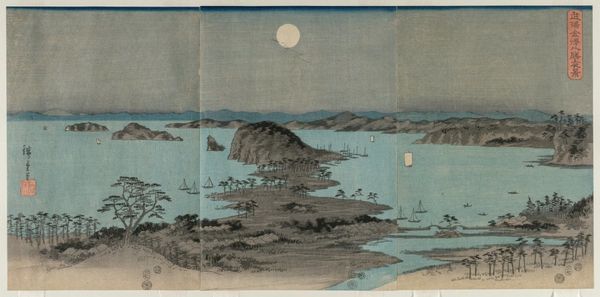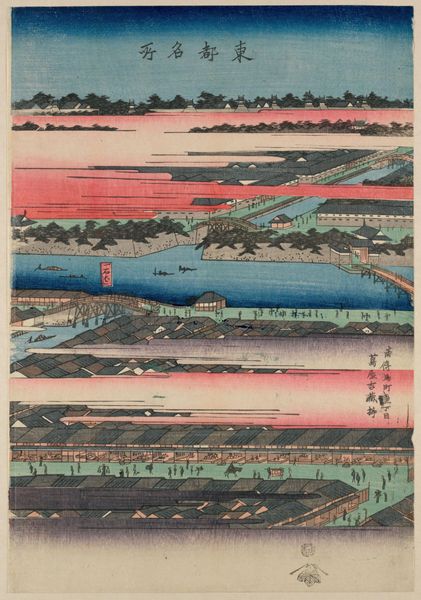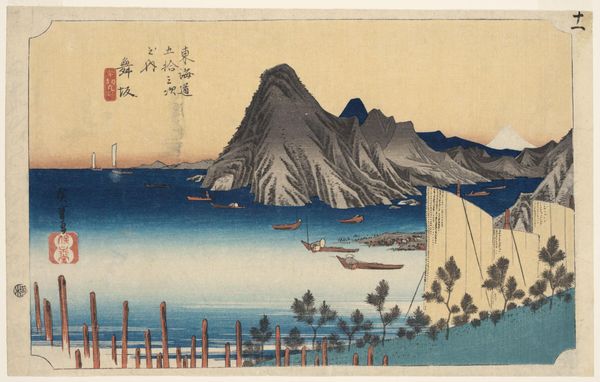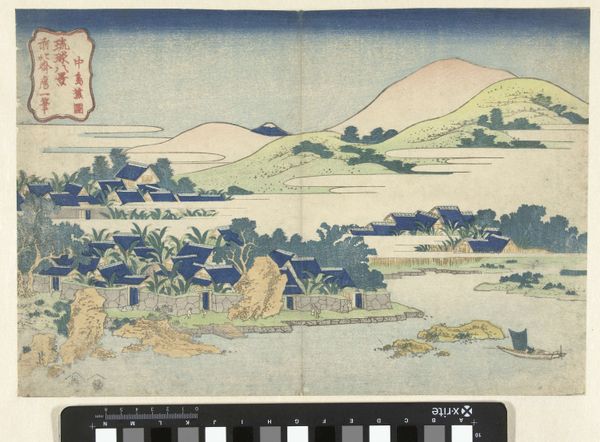
print, woodblock-print
# print
#
asian-art
#
traditional media
#
landscape
#
ukiyo-e
#
woodblock-print
#
line
#
realism
Dimensions: height 366 mm, width 250 mm
Copyright: Rijks Museum: Open Domain
Curator: Standing before us is "The Coast at Samezu in South Shinagawa," a woodblock print crafted by Utagawa Hiroshige in 1857. It's a captivating piece of the ukiyo-e tradition currently held in the Rijksmuseum. Editor: My initial impression is one of serenity. The gradation of blues in the water, contrasted with the subtle peach of the sky, evokes a quiet stillness, yet the dynamism is provided by the diagonal lines and geometric positioning of each element. Curator: Indeed. Hiroshige's work offers us insight into Edo-period Japan. Samezu, now a part of modern Tokyo, was then a landscape vital for fishing. Consider the social stratification visible—fishermen in small boats, perhaps subsistence living alongside merchant vessels implying broader economic networks. The artwork illustrates both the beauty of nature and the ways humans interacted with the resources to ensure survival. Editor: Absolutely. The use of line here is crucial. Note how each boat is rendered, its precise outline delineating form within the pictorial plane, each reflecting light differently according to its size and form. Curator: I also consider how this piece would have been viewed then versus now. During the Edo period, landscapes represented people's relationship to authority and social harmony. By today's standards, a piece such as this is one example of the commodification of artworks based on specific aesthetic and material circumstances which dictate monetary value and cultural cachet. Editor: The strategic division of space contributes profoundly to the print's success. The sky is separate and in the top corner; the land is divided into top and bottom via perspective and scale—near objects being large and detailed and faraway objects becoming more linear, faded, and schematic; there's a foreground, middle ground, and background. A classic way of signaling depth of field, that gives us space and legibility. Curator: This makes us ponder the historical, social, and cultural value of the print, how a single piece can exist as documentation of nature and the class stratifications of the time. Art and the human interaction that affects the development of society... Editor: Precisely, the intersection between beauty, form, function, and composition working together and generating harmony and discord as a result, something this piece holds in the balance well.
Comments
No comments
Be the first to comment and join the conversation on the ultimate creative platform.
